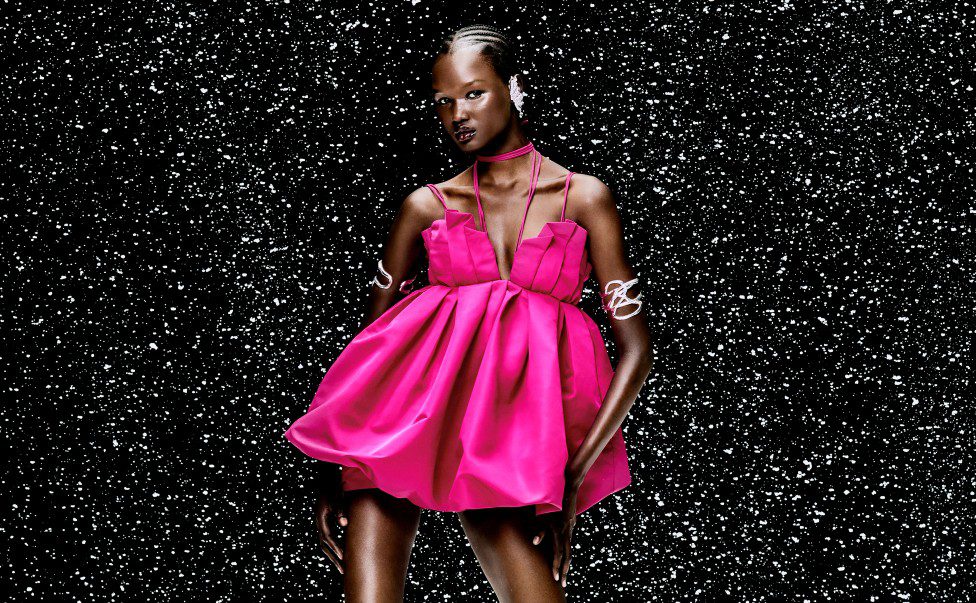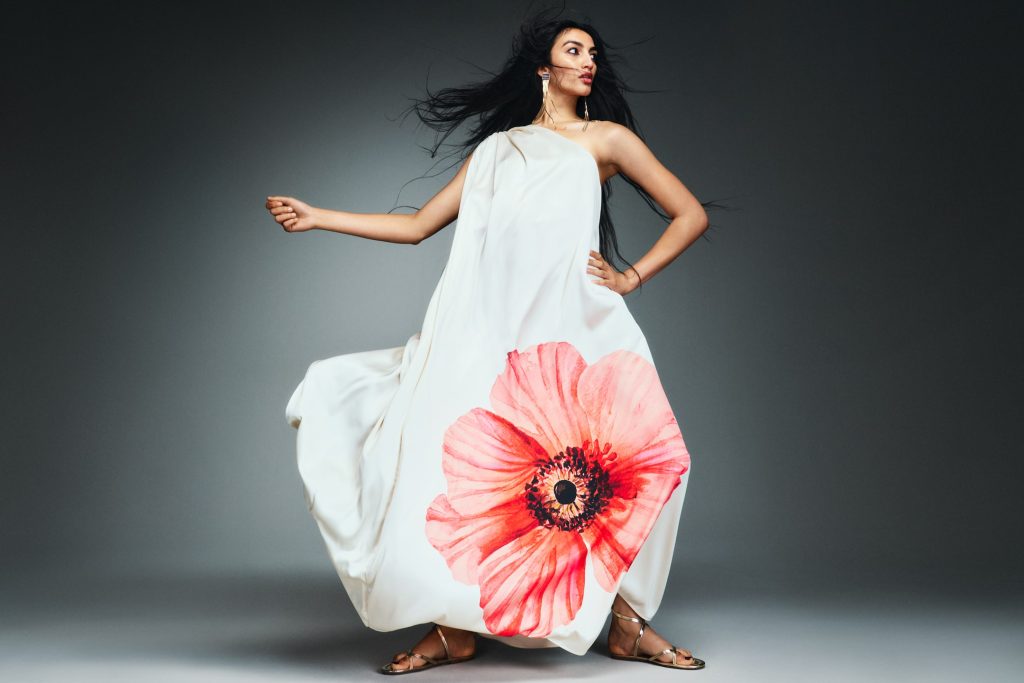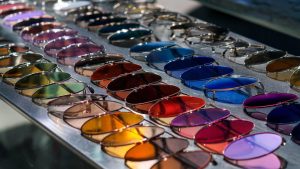While H&M has high fashion collaborations and sustainable initiatives with partners like Balmain, Karl Lagerfeld, and Versace, Uniqlo combines minimalist design with high-fashion and artistic collaborations like Jil Sander (J+), Lemaire, Uniqlo x Marimekko, and KAWS. Let’s find out more about H&M versus Uniqlo.

H&M Innovation Stories
While both H&M and Uniqlo have a loyal consumer base, H&M versus Uniqlo offers a distinct approach to fashion. While H&M is acclaimed for its trend-driven apparel at budget-friendly prices, Uniqlo provides the antidote to the fast fashion mindset by making high quality, durable and versatile apparel. This article explores the differences between H&M and Uniqlo, comparing their fashion philosophies, pricing strategies, and sustainability efforts, to help you decide which fashion brand aligns with your mindset.
Table of Contents
- H&M vs. Uniqlo: Fashion Philosophy
- H&M vs. Uniqlo: Pricing and Affordability
- H&M vs. Uniqlo: Sustainability Efforts and Initiatives
- H&M vs. Uniqlo: Global Reach and Customer Base
- H&M vs. Uniqlo: Collaborations
- H&M vs. Uniqlo: Which fashion brand is right for you?
- FAQS on H&M vs. Uniqlo
H&M vs. Uniqlo: Fashion Philosophy
Uniqlo and H&M, two of the most recognised global fashion brands, approach the business of fashion in different ways.
Uniqlo is celebrated for its emphasis on timeless, high-quality basics that prioritise functionality, comfort, and sustainability. The Japanese retailer embodies the principle of “LifeWear,” crafting clothing that transcends trends and fits into everyday life. The designs focus on simplicity and minimalism, aiming to offer versatile pieces that can be worn across seasons and occasions.

Kareena Kapoor Khan stars in the Uniqlo Fall Winter 2024 campaign. Image Source: uniqlo.com
That said, there is an effort to retain a frisson of excitement. Uniqlo Creative Director Claire Waight Keller tells Vogue: “What you’ll start to notice is that within some of those core programs there’ll be new fashion shapes, and there’ll be new silhouettes that drop every other month, to really bring in the freshness… Uniqlo appeals to such a big audience but a big chunk that they really capture is that younger age bracket. It’s a fast-moving market, so there’s a lot to learn there.”
H&M, on the other hand, is characterised by its trend-driven, high-turnover collections. The Swedish fashion brand is known for its ability to quickly replicate runway styles and translate them into affordable, accessible pieces. Their collections are bold, vibrant, and designed to appeal to a young, fashion-conscious consumer demographic.
The core difference between Uniqlo and H&M lies in the design approach: Uniqlo’s ethos is rooted in longevity and utility, while H&M thrives on delivering new, stylish pieces frequently. Uniqlo emphasises a neutral colour palette, clean lines, and a minimalist aesthetic, making its garments versatile. In contrast, H&M’s focus on trendy, eye-catching designs often results in pieces that are more seasonal or occasion-specific, meaning they may fall out of style more quickly than Uniqlo’s offerings.
H&M vs. Uniqlo: Pricing and Affordability
When it comes to pricing, Uniqlo and H&M take different approaches that reflect their broader brand philosophies.
H&M is renowned for its affordability and budget-friendly product portfolio, which appeal to consumers looking for trend-driven fashion. The fast-fashion giant’s pricing strategy is built around making the latest styles available to the masses at low prices, allowing shoppers to update their wardrobes frequently. This makes H&M a go-to for consumers seeking quick, affordable fashion fixes, especially for trend-driven items that may not be worn for long.

H&M budget friendly prices make it ideal for those who like to refresh their wardrobe often
In contrast, Uniqlo positions itself as a brand that offers value for quality rather than focusing purely on being budget-friendly. While its prices are competitive and accessible, Uniqlo emphasises the longevity and durability of its products, often using higher-quality materials than typical fast-fashion brands.
The Japanese retailer’s pricing reflects its commitment to creating timeless basics designed to last, meaning that while individual pieces may be slightly more expensive than those at H&M, the overall value proposition is higher. Uniqlo customers are encouraged to view their purchases as investments in quality essentials that will remain relevant and wearable over time.
Ultimately, the choice between H&M and Uniqlo comes down to what the customer values. H&M excels in offering trend-driven, budget-friendly options for those who prioritise keeping up with the latest fashions. However, Uniqlo provides value for consumers who are willing to spend a bit more for high-quality, timeless pieces that deliver durability and versatility.
While H&M’s affordability makes it ideal for those who like to refresh their style often, Uniqlo’s focus on quality offers better value for customers who prefer to invest in enduring wardrobe staples.
H&M vs. Uniqlo: Sustainability Efforts and Initiatives
In recent years, sustainability has become a key focus for many fashion brands. Uniqlo and H&M have both made strides toward sustainability, but their approaches reflect the differences in their brand philosophies and business models.
Uniqlo, as a brand focused on longevity and quality, emphasises sustainability by creating durable products designed to last, thereby reducing the need for frequent replacements. One of Uniqlo’s key sustainability initiatives is its partnership with the Blue Cycle project, which reduces water usage in denim production by up to 99 percent.
Uniqlo has also committed to using sustainable materials like recycled polyester and organic cotton across its product lines, aiming for environmental responsibility and product durability. Their recycling program encourages customers to return used clothing, which is then either repurposed or donated, further minimising waste. The brand also aims to switch approximately 50 percent of all materials used to recycled materials by 2030.
H&M has introduced a “Conscious” collection that features clothing made from sustainable materials such as organic cotton, recycled polyester, and Tencel. The fashion brand has set ambitious goals, like becoming climate positive by 2040 and using 100 percent sustainably sourced or recycled materials by 2030. Recently, H&M presented a collection from the ‘Innovation Stories‘ platform, which focuses on hand-worked minis with recycled sequins, rhinestones and beads.
Moreover, H&M’s garment recycling program allows customers to return old clothes, which are then resold, repurposed, or recycled into new materials. However, given H&M’s fast-fashion model, the high turnover of products and rapid production cycles inherently present sustainability challenges, as the focus on fashion trends can lead to more frequent purchases and waste.
“I am convinced that brands placing sustainability at their core will be better prepared to meet the evolving requirements of customers and legislators, as well as making vital contributions to a better future for the people and the planet”, says Leyla Ertur, Head of Sustainability, H&M Group. “Developing the processes and infrastructure to scale circular options for our customers is an important lever to reach our climate goals. This year, our use of recycled materials accelerated, reaching 23 per cent and contributing to a total of 84 per cent recycled or other more sustainably sourced materials in our collections.”
H&M vs. Uniqlo: Global Reach and Customer Base
H&M and Uniqlo are both global fashion giants, but their paths to international success and the customers they attract are distinctive.
H&M, founded in Sweden, operates in over seventy-five countries with thousands of stores, giving it a significant international presence. As one of the pioneers of fast fashion, H&M has built a broad customer base by offering trend-driven, affordable apparel accessible to a diverse spectrum of shoppers.

H&M Festive Edit 2024
Its widespread popularity is bolstered by its ability to quickly adapt to local fashion tastes, making it appealing to fashion-conscious customers around the world. H&M’s ability to cater to different styles and preferences globally, coupled with its strong e-commerce presence, has helped the fashion brand maintain a diverse and extensive customer base.
Per WWD: ‘H&M is getting increasingly inventive, consumer-centric, and less “cookie-cutter” in its store rollout. The Stockholm-based fashion specialty retailer is applying technologies to improve the customer experience, localising assortments and testing some new concepts and services, while continuing to increase its store count. Much of the investment is happening in New York City.’
Uniqlo, although conservative in its global expansion, has achieved significant global reach. Originating from Japan, Uniqlo has expanded into over twenty-five countries, with a strong presence in Asia, Europe, and the United States.
Unlike H&M’s trend-driven appeal, Uniqlo’s customer base is drawn to its timeless, minimalist designs and high-quality basics. Uniqlo’s growth strategy is calculated, often targeting markets where there is demand for premium yet affordable everyday wear. Its customer base is composed of individuals who value practicality, durability, and style without following fast-changing trends, appealing to both young professionals and elders who prioritise comfort and longevity in their wardrobe choices.
H&M vs. Uniqlo: Collaborations
Both Uniqlo and H&M have leveraged high-profile collaborations to enhance their brand appeal, though they approach these partnerships in different ways that reflect their respective brand identities.
Uniqlo’s collaborations tend to align with its focus on timeless, functional design. The brand has partnered with designers like Jil Sander, and artists like Kaws and Takashi Murakami, creating capsule collections that combine high fashion and an artistic sensibility with Uniqlo’s minimalist aesthetic.
By teaming up with influential designers and artists, Uniqlo reinforces its commitment to creating clothing that is stylish and enduring, making these partnerships an extension of its “LifeWear” philosophy. Uniqlo is also known for its technical innovations like HEATTECH, AIRism, and BlockTech, which offer temperature regulation, breathability, and weather protection.
In contrast, H&M’s collaborations are centred on bold, trend-driven fashion that makes a statement, often generating significant buzz in the fashion industry. The brand is known for its collaborations with luxury fashion brands like Balmain, Versace, and Moschino, bringing couture-level designs to the mass market at affordable prices. These limited-edition collections often sell out quickly, appealing to H&M’s trend-conscious customer base eager for fashion-forward pieces.
H&M’s collaborations are often more daring and eclectic, allowing the brand to inject excitement and novelty into its fast-fashion lineup while making luxury fashion accessible to a wider audience. The focus on high-fashion names aligns with H&M’s strategy of offering the latest trends and keeping customers engaged with constantly evolving collections.
H&M vs. Uniqlo: Which fashion brand is right for you?

Uniqlo offers wardrobe essentials that emphasise comfort and longevity. Image Source: uniqlo.com
Choosing between Uniqlo and H&M depends on your personal style, shopping habits, and priorities when it comes to apparel and accessories.
For a consumer that values timeless, high-quality pieces that can be worn year after year, Uniqlo is the better fit. Acclaimed for its minimalist designs and durable fabrics, Uniqlo offers wardrobe essentials that emphasise comfort and longevity. The fashion brand’s focus on functionality and simplicity makes it ideal for those who prefer versatile basics that can be mixed and matched with ease.
On the other hand, for consumers who enjoy experimenting with fashion trends and regularly updating their wardrobe with new, trend-driven pieces, H&M may be the preferred brand. The brand’s wide spectrum of styles, from casual wear to formal outfits, appeals to a younger, fashion-conscious audience looking for affordable ways to refresh their look.
H&M vs. Uniqlo: FAQs
What is the main difference between Uniqlo and H&M in terms of fashion philosophy?
Uniqlo focuses on timeless basics and high quality apparel designed for versatility and comfort, while H&M is more trend-driven, offering fast-fashion that reflects the latest styles and seasonal trends.
Which brand is more affordable, Uniqlo or H&M?
H&M offers lower prices on trend-driven items, making it budget-friendly for shoppers looking to update their wardrobe frequently. Uniqlo, while still affordable, emphasises value for quality, with slightly higher prices for its durable, long-lasting basics.
Which brand is more sustainable: Uniqlo or H&M?
Uniqlo’s sustainability approach focuses on creating durable, long-lasting garments, which naturally reduces waste by encouraging fewer purchases. H&M, despite its fast-fashion model, has made significant strides with its “Conscious” collection and recycling programs, but the short lifecycle of its products still presents sustainability challenges.
Which brand offers better quality clothing: Uniqlo or H&M?
Uniqlo is generally known for offering higher-quality fabrics and more durable construction, making its products better suited for long-term use. H&M focuses more on affordable, trend-based fashion, which can sometimes result in less durable clothing compared to Uniqlo’s staples.
Who are the target customers of Uniqlo and H&M
Uniqlo caters to a broad demographic, including those who prefer simple, timeless styles that offer functionality and longevity. H&M, on the other hand, appeals more to younger, fashion-conscious consumers who enjoy experimenting with current trends and updating their wardrobe frequently.
Which brand has a larger global presence: Uniqlo or H&M?
H&M has a larger global presence with over 4,000 stores in more than 70 countries. Uniqlo, while also an international brand, has around 2,000 stores in over 25 countries, with a strong focus on major urban markets.
What are the key differences in collaborations between Uniqlo and H&M?
Uniqlo’s collaborations focus on functional, minimalist designs with well-known designers like Jil Sander and Christophe Lemaire, reflecting its philosophy of timeless basics. H&M’s collaborations are more trend-driven, partnering with high-end designers like Versace and Balmain to bring bold, fashion-forward collections to the mass market.
Which brand is better for building a capsule wardrobe?
Uniqlo is ideal for building a capsule wardrobe due to its focus on high-quality, versatile basics that can be worn in various combinations over time. Its minimalist designs and neutral colour palette make it easy to create a cohesive, long-lasting wardrobe. H&M’s trendy pieces are more suited for seasonal updates rather than long-term staples.
How do the brands compare in terms of customer base?
H&M has a wider customer base, appealing primarily to younger, style-conscious shoppers who prioritise affordability and the latest trends. Uniqlo attracts a more diverse audience, including those who prefer quality, timeless basics that prioritise comfort and functionality.
Which brand is better for sustainability-conscious shoppers?
While both brands are making efforts towards sustainability, Uniqlo’s focus on durability and timeless design aligns more with a sustainability-conscious lifestyle. H&M’s fast-fashion model, despite its “Conscious” collection and recycling programs, is inherently less sustainable due to the rapid turnover of trendy products.
Read More:

Jasmeen Dugal is Associate Editor at FashionABC, contributing her insights on fashion, technology, and sustainability. She brings with herself more than two decades of editorial experience, working for national newspapers and luxury magazines in India.
Jasmeen Dugal has worked with exchange4media as a senior writer contributing articles on the country’s advertising and marketing movements, and then with Condenast India as Net Editor where she helmed Vogue India’s official website in terms of design, layout and daily content. Besides this, she is also an entrepreneur running her own luxury portal, Explosivefashion, which highlights the latest in luxury fashion and hospitality.











